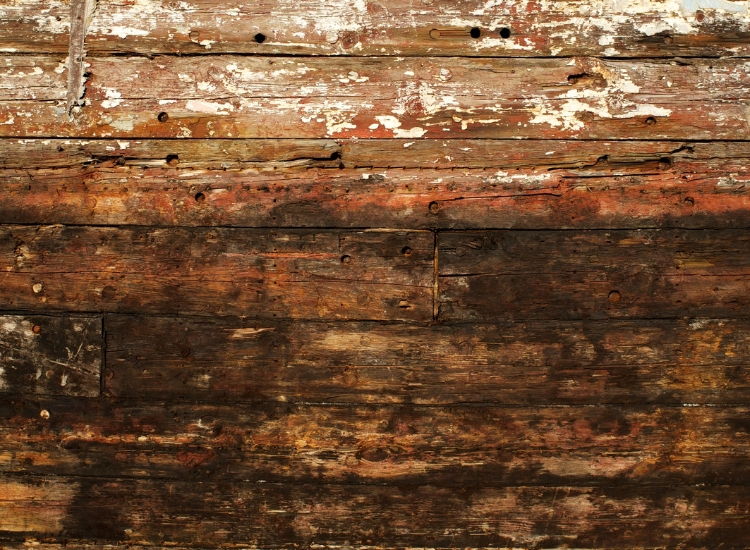Can You Burn Rotten Wood? Here’s What You Need to Know

Can you burn rotten wood? If you’re wondering whether it’s possible to burn rotten wood, you’ve come to the right place! Rotten wood, as the name suggests, is wood that has decayed. But does that mean it’s completely useless for burning?
In this article, we’ll explore the topic of burning rotten wood. We’ll discuss whether it’s safe to burn, the potential risks involved, and any precautions you should take. So, if you’ve got a pile of rotten wood lying around and you’re wondering what to do with it, keep reading to find out!
Quick Links
Is it Safe to Burn Rotten Wood?
Burning wood is a common method of heating or cooking, but when it comes to burning rotten wood, there are some important considerations to keep in mind. Rotten wood can pose potential risks and challenges compared to burning dry, seasoned wood. Here’s what you need to know about burning rotten wood:
Poor Combustion: Rotten wood tends to have a higher moisture content, which can result in poor combustion. The excess moisture can cause the wood to smolder and produce more smoke, leading to inefficient burning and decreased heat output.
Smoke and Emissions: Burning rotten wood can result in the release of more smoke and harmful emissions. The smoke may contain higher levels of particulate matter and pollutants, which can be detrimental to air quality and potentially harmful to your health.
Increased Creosote Build-up: Creosote is a flammable substance that can accumulate in the chimney or flue when wood is burned. Burning damp or rotten wood can lead to increased creosote build-up, posing a higher risk of chimney fires.
Unpredictable Burning Behavior: Rotten wood can be less predictable when it comes to burning. It may smolder, produce uneven heat, or even extinguish prematurely. This can make it challenging to achieve and maintain a steady fire.
In general, it is best to avoid burning rotten wood if possible. Opting for dry, seasoned wood can ensure more efficient burning, better heat output, and reduced risks associated with burning rotten wood. If you have no alternative but to burn rotten wood, it is important to take extra precautions to ensure proper ventilation, chimney maintenance, and regular cleaning to minimize the potential hazards.
Potential Risks of Burning Rotten Wood
- Reduced heat output: Rotten wood has a higher moisture content, which can result in decreased heat output when burned.
- Increased smoke and pollutants: Burning rotten wood can produce more smoke and pollutants due to the presence of mold, mildew, and other contaminants.
- Health hazards: Inhaling smoke from burning rotten wood can pose health risks, especially for those with respiratory conditions or sensitivities.
- Damage to chimney or stove: Rotten wood may produce creosote buildup, which can lead to chimney fires or damage to your stove or fireplace.
- Unpleasant odor: Burned rotten wood can emit unpleasant odors, making it less enjoyable to be around the fire.
It is advisable to avoid burning rotten wood and opt for properly seasoned firewood to ensure a safe and efficient fire.
Effects of Burning Rotten Wood on Air Quality
Burning rotten wood can have negative effects on air quality and pose risks to human health. When wood is rotten, it tends to contain higher levels of moisture, which can result in incomplete combustion. This incomplete combustion leads to the release of harmful pollutants into the air, including particulate matter (PM), carbon monoxide (CO), and volatile organic compounds (VOCs).
Particulate matter, or fine particles, can be small enough to be inhaled into the lungs and cause respiratory problems. These particles can also contribute to the formation of haze and smog, reducing air visibility and overall air quality. Carbon monoxide is a toxic gas that, when inhaled, can interfere with the delivery of oxygen in the body, leading to various health issues, including headaches, dizziness, and even death in severe cases.
Volatile organic compounds are gases emitted during the burning of wood, and they can have both short-term and long-term health effects. Short-term exposure to VOCs can cause eye, nose, and throat irritation, headaches, nausea, and dizziness. Prolonged exposure to VOCs has been linked to more serious health conditions, such as respiratory disorders, liver and kidney damage, and even cancer.
To protect air quality and minimize the negative effects of burning rotten wood, it is important to use dry, seasoned wood for fires and avoid burning wood that is decayed or moldy. Properly drying and storing firewood ensures that it contains lower moisture content and will burn more efficiently, reducing the release of harmful pollutants into the air.
Additionally, using alternative heating methods, such as electric or gas-powered heaters, can help reduce the reliance on wood burning and minimize air pollution. It is important to prioritize the health and safety of both ourselves and our environment by making conscious choices regarding the burning of wood and considering the impact on air quality.
Can Rotten Wood Produce Toxic Fumes When Burned?
Burning rotten wood can potentially release toxic fumes into the air. When wood decays, it can develop mold, fungus, and other harmful substances. These substances can produce dangerous gases when burned, such as carbon monoxide and other volatile organic compounds (VOCs). Inhaling these fumes can be detrimental to respiratory health and may cause symptoms such as coughing, wheezing, dizziness, or even more severe effects in extreme cases.
It is crucial to exercise caution and avoid burning rotten wood, especially indoors or in poorly ventilated areas. Instead, it is recommended to dispose of rotten wood properly or seek alternative firewood sources to ensure the safety of both you and the environment.
Alternative Uses for Rotten Wood
Rotten wood may seem useless, but it can actually have various alternative uses. Instead of throwing it away, consider these creative ways to repurpose rotten wood:
- Composting: Rotten wood can be a valuable addition to your compost pile, providing carbon-rich material that helps nourish your garden soil.
- Fuel or Firewood: While rotten wood may not be suitable for burning in a fireplace, it can be used as fuel in outdoor fire pits or for heating purposes if properly dried.
- Gardening: Rotten wood can be used as a natural mulch in garden beds or as a base material for raised garden beds, helping improve soil structure and retain moisture.
- DIY Projects: Rotten wood can be repurposed for various DIY projects, such as rustic furniture, decorative pieces, or outdoor structures like fences or garden borders.
- Worm Bins: If you’re into vermicomposting, rotten wood can serve as bedding material in a worm bin, creating a welcoming environment for composting worms.
- Pathways and Walkways: Small pieces of rotten wood can find new life as stepping stones in garden pathways or walkways.
Before using rotten wood for any of these purposes, it’s important to assess its condition and ensure it is free from harmful chemicals or fungi that could be detrimental to the intended use.
Precautions When Burning Rotten Wood
- Potential for Increased Smoke and Odor: Rotten wood tends to produce more smoke and unpleasant odors when burnt compared to dry, seasoned wood.
- Risk of Chimney Build-up: Burning rotten wood can result in the accumulation of creosote, a highly flammable substance, in the chimney. This can increase the risk of chimney fires.
- Reduced Heat Output: Rotten wood has a lower energy content and may produce less heat when burned. This can affect the efficiency of the fire and its ability to effectively heat a room.
- Spread of Mold and Fungi: Burning rotten wood can release spores from mold and fungi present in the wood, which may exacerbate allergies or respiratory conditions.
- Safety Hazards: Rotten wood can be structurally compromised and may break apart unexpectedly during burning, posing a risk of falling logs or embers.
- Environmental Impact: Burning rotten wood can contribute to air pollution and release harmful substances into the environment.
It is important to exercise caution and consider these precautions before burning rotten wood. It is generally recommended to use dry, seasoned wood for safe and efficient fires.
Proper Disposal of Rotten Wood
When it comes to dealing with rotten wood, it is important to follow proper disposal methods to ensure safety and environmental responsibility. Rotten wood can be a breeding ground for mold, fungi, and pests, making it important to handle and dispose of it properly. Here are some guidelines for the proper disposal of rotten wood:
- Separate and contain: Keep rotten wood separate from other waste materials to prevent contamination. Use a dedicated container or area to store the rotten wood until it can be properly disposed of.
- Check local regulations: Before disposing of rotten wood, check with your local waste management authorities to understand the regulations and guidelines specific to your area. Some areas may have specific instructions or designated disposal sites for rotten wood.
- Avoid burning: It is generally not recommended to burn rotten wood. Rotten wood may release toxic fumes when burned, and the burning process may not be complete, resulting in the release of harmful pollutants into the air.
- Landfill disposal: If allowed by local regulations, you can dispose of small amounts of rotten wood in a landfill. However, it is important to check if the landfill accepts untreated wood waste and if there are any specific requirements for disposal.
- Composting: If the rotten wood is untreated and free from any paint, stain, or chemical treatment, it may be suitable for composting. However, check with your local composting facility or guidelines to ensure proper composting practices are followed.
- Recycling and repurposing: Depending on the condition and type of wood, you may be able to recycle or repurpose rotten wood. Some recycling centers or facilities accept wood waste, while others may be able to provide guidance on repurposing options.
By following these guidelines, you can ensure the proper disposal of rotten wood while minimizing potential risks and promoting environmental sustainability. Always prioritize safety and consult with local authorities or waste management professionals for specific instructions and recommendations.
Environmental Impact of Burning Rotten Wood
Burning rotten wood can have negative environmental impacts. When rotten wood is burned, it releases harmful pollutants into the air, contributing to air pollution and potentially affecting air quality. These pollutants include carbon monoxide, nitrogen oxides, sulfur dioxide, and particulate matter, which can have detrimental effects on both human health and the environment.
In addition, burning rotten wood may release higher amounts of smoke and emissions compared to burning dry and seasoned wood. This can contribute to the formation of smog and haze, which not only diminishes visibility but can also have harmful effects on ecosystems and vegetation.
Furthermore, burning rotten wood can release higher levels of carbon dioxide (CO2), a greenhouse gas that contributes to climate change. As rotten wood decomposes, it releases the carbon it has stored over time. By burning this rotten wood, that stored carbon is released into the atmosphere, adding to the overall carbon footprint.
It is important to prioritize sustainable and environmentally friendly wood burning practices. Using properly seasoned wood and avoiding the burning of rotten wood can help reduce the negative environmental impact associated with wood burning. Additionally, exploring alternative sources of energy or utilizing more efficient wood burning appliances can also contribute to minimizing environmental harm.
Conclusion
In conclusion, it is best to avoid burning rotten wood if possible. Rotten wood can result in poor combustion, increased smoke and emissions, and increased creosote build-up. It may also have unpredictable burning behavior. These factors can decrease heat output, pose health hazards, and damage chimneys or stoves. Furthermore, burning rotten wood can have negative effects on air quality and release toxic fumes. It is important to prioritize safety and environmental responsibility by using dry, seasoned wood for fires and properly disposing of rotten wood. Consider alternative uses for rotten wood, such as composting or DIY projects, rather than burning it. By following these precautions and guidelines, you can ensure a safe and sustainable approach to dealing with rotten wood.







